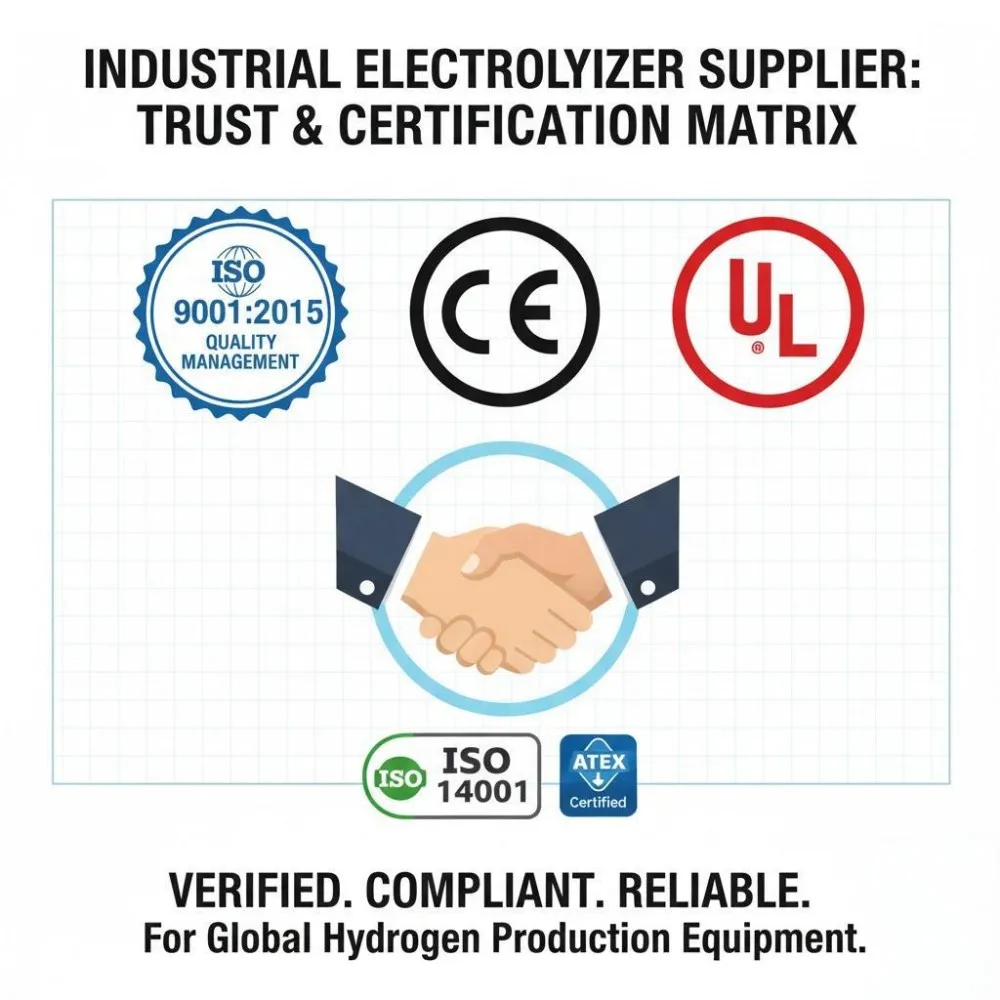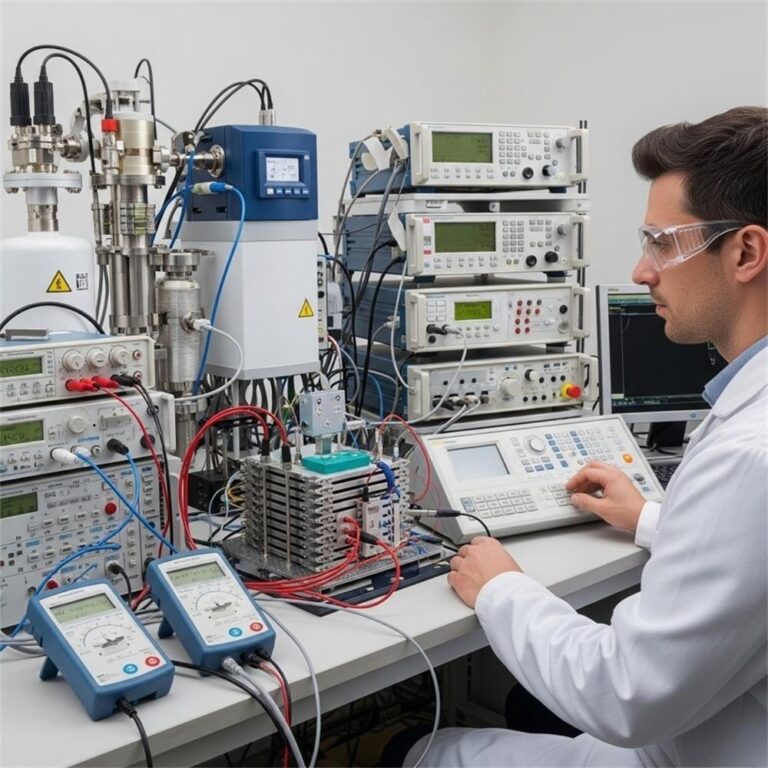Hydrogen Power Generators: Electrolysis Technology and Applications
Introduction
Hydrogen power generators are at the forefront of the clean energy revolution, offering a sustainable alternative to fossil fuels. Central to this innovation is electrolysis, a process that splits water into hydrogen and oxygen using electricity. This method not only produces clean energy but also contributes to reducing greenhouse gas emissions and enhancing energy security. In this article, we delve into the intricacies of electrolysis, explore the components of hydrogen power systems, examine their applications across various industries, assess efficiency metrics, and look ahead to future trends in this dynamic field.

Understanding Electrolysis and Hydrogen Power Generation
What is Electrolysis?
Electrolysis is a chemical process that uses electrical energy to split water (H₂O) into its constituent elements: hydrogen (H₂) and oxygen (O₂). This reaction occurs in a device called an electrolyzer, which comprises two electrodes—an anode and a cathode—immersed in an electrolyte solution. When an electric current passes through the system, water molecules are decomposed, producing hydrogen gas at the cathode and oxygen gas at the anode.(heletitaniumhydrogen.com)
How Electrolysis Generates Power
The hydrogen produced through electrolysis can be stored and later used to generate electricity in fuel cells. In a hydrogen fuel cell, hydrogen gas reacts with oxygen from the air to produce electricity, water, and heat. This electrochemical reaction is highly efficient and emits only water vapor, making it an environmentally friendly power generation method.
Types of Electrolysis
- Alkaline Electrolysis: Utilizes a liquid alkaline electrolyte, such as potassium hydroxide. It’s a mature and cost-effective technology but operates at lower current densities, resulting in larger system sizes.
- Proton Exchange Membrane (PEM) Electrolysis: Employs a solid polymer electrolyte and operates at higher current densities, allowing for compact system designs. PEM electrolyzers offer rapid response times but are generally more expensive due to the use of noble metal catalysts.
- Solid Oxide Electrolysis (SOEC): Operates at high temperatures (around 700–1,000°C) and uses a solid ceramic electrolyte. SOECs can achieve higher efficiencies by utilizing waste heat but are still in the developmental stage.
- Anion Exchange Membrane (AEM) Electrolysis: A hybrid approach combining features of alkaline and PEM technologies. AEM electrolyzers aim to offer high efficiency at lower costs but are currently under research and development.(heletitaniumhydrogen.com)
System Components of an Electrolysis Hydrogen Power Generator
Electrolyzer Stack
The electrolyzer stack is the core component where the electrolysis reaction occurs. It consists of multiple cells connected in series to increase hydrogen production. Materials used include electrodes coated with catalysts and membranes that facilitate ion exchange. Design considerations focus on maximizing surface area and minimizing resistance to enhance performance.
Power Supply
A reliable power supply is essential to provide the necessary electrical energy for electrolysis. This includes AC/DC converters and rectifiers that ensure a stable and efficient current. The efficiency of the power supply directly impacts the overall energy consumption of the system.
Water Purification System
Pure water is crucial for efficient electrolysis and to prevent damage to the electrolyzer components. The purification system typically includes filters, deionizers, and reverse osmosis units to remove impurities and ensure water quality meets the required standards.
Hydrogen Storage
Once produced, hydrogen gas must be stored safely and efficiently. Common storage methods include:
- Compressed Gas: Hydrogen is stored under high pressure in tanks.
- Liquid Hydrogen: Hydrogen is cooled to cryogenic temperatures and stored as a liquid.
- Metal Hydrides: Hydrogen is absorbed into metal alloys, allowing for compact storage.
Each method has its own advantages and safety considerations.
Control System
The control system monitors and regulates the operation of the hydrogen power generator. It includes sensors, controllers, and software that manage parameters such as temperature, pressure, and gas flow rates. An effective control system ensures optimal performance and safety of the entire setup.
Applications Across Industries
Industrial Power Generation
Hydrogen power generators are increasingly used in industrial settings to provide clean and reliable electricity. They can replace or supplement traditional fossil fuel-based power sources, reducing carbon emissions and enhancing energy security.
Transportation
In the transportation sector, hydrogen fuel cells power various vehicles, including cars, buses, trucks, trains, and ships. These vehicles benefit from quick refueling times and longer ranges compared to battery-electric counterparts, making hydrogen a viable option for heavy-duty and long-distance travel.
Residential Power
Hydrogen power generators can be integrated into residential energy systems to provide backup power or supplement renewable energy sources like solar panels. This application enhances energy resilience and reduces dependence on the grid.
Grid-Scale Energy Storage
Hydrogen serves as an effective medium for storing excess energy generated from renewable sources. During periods of low demand, surplus electricity can produce hydrogen via electrolysis, which is then stored and converted back to electricity when needed, aiding in grid stability and energy balance.
Backup Power
Critical facilities such as hospitals, data centers, and emergency services require uninterrupted power supply. Hydrogen power generators offer a clean and reliable backup power solution, ensuring operational continuity during grid outages.
Efficiency Metrics and Performance Factors
Energy Efficiency
Energy efficiency in hydrogen production refers to the ratio of energy output (in the form of hydrogen) to the energy input (electricity used for electrolysis). Factors influencing efficiency include the type of electrolyzer, operating temperature, and current density.
Hydrogen Production Rate
The production rate is measured in kilograms or cubic meters of hydrogen produced per hour. It depends on the electrolyzer’s capacity, operating conditions, and the purity of input water.
Purity of Hydrogen
High-purity hydrogen is essential for applications like fuel cells and industrial processes. Purification methods include pressure swing adsorption, membrane separation, and catalytic recombination to remove impurities and achieve desired purity levels.
Durability and Lifespan
The longevity of electrolysis systems is influenced by factors such as material degradation, operating conditions, and maintenance practices. Advancements in materials and system design aim to enhance durability and reduce lifecycle costs.
Cost Analysis
The cost of hydrogen production encompasses capital expenditures (CAPEX) for equipment and operational expenditures (OPEX) for maintenance and energy consumption. Efforts to reduce costs focus on improving efficiency, scaling up production, and integrating renewable energy sources.
Future Trends and Developments
Advances in Electrolyzer Technology
Ongoing research aims to develop more efficient and cost-effective electrolyzers. Innovations include the use of advanced materials, improved catalysts, and novel cell designs to enhance performance and reduce costs.
Integration with Renewable Energy Sources
Combining electrolysis with renewable energy sources like solar and wind enables the production of green hydrogen. This integration facilitates the decarbonization of various sectors and contributes to a sustainable energy ecosystem.(heletitaniumhydrogen)
Government Policies and Incentives
Governments worldwide are implementing policies and incentives to promote hydrogen technologies. These include subsidies, tax credits, and research funding aimed at accelerating the adoption of hydrogen as a clean energy carrier.
Decreasing Costs
As technology advances and economies of scale are realized, the cost of hydrogen production is expected to decline. This trend will enhance the competitiveness of hydrogen power generators in the global energy market.
FAQs
Q1: What is the main advantage of hydrogen power generators over traditional generators?
Hydrogen power generators produce electricity without emitting greenhouse gases, offering a clean and sustainable alternative to fossil fuel-based generators.
Q2: How safe is hydrogen as a fuel?
When handled properly, hydrogen is a safe fuel. Safety measures include proper storage, leak detection systems, and adherence to handling protocols to mitigate risks.
Q3: Can hydrogen power generators be used in residential settings?
Yes, hydrogen power generators can be integrated into residential energy systems to provide backup power or supplement renewable energy sources.
Q4: What are the environmental benefits of using hydrogen power generators?
Certainly! Here’s the continuation of the article:
FAQs (Continued)
Q4: What are the environmental benefits of using hydrogen power generators? Hydrogen power generators produce zero emissions at the point of use. The only byproduct from hydrogen fuel cells is water vapor, which makes them a clean energy solution. Additionally, when hydrogen is produced using renewable energy, the entire lifecycle can be carbon-neutral, contributing significantly to reducing greenhouse gas emissions and combating climate change.
Q5: What types of electrolyzers are best for industrial use? For industrial applications, Proton Exchange Membrane (PEM) and Alkaline Electrolyzers are the most commonly used. PEM electrolyzers are favored for their compact size and high efficiency, while alkaline electrolyzers are cost-effective and have a longer track record in industrial settings.
Q6: How is hydrogen stored and transported after generation? Hydrogen can be stored in compressed gas cylinders, as liquid hydrogen in cryogenic tanks, or absorbed into metal hydrides. Transportation can occur via high-pressure tanks, pipelines, or specialized hydrogen carriers. Each method has trade-offs in terms of cost, infrastructure, and energy requirements.
Conclusion
Hydrogen power generators, driven by the science of electrolysis, represent a transformative leap in our pursuit of sustainable and clean energy solutions. As we’ve explored, electrolysis allows for the clean production of hydrogen by splitting water using electricity—a process that can be powered entirely by renewables.
The integration of these systems across diverse industries—from transportation and industrial power to residential use and grid-scale energy storage—illustrates the versatility and potential of hydrogen as an energy vector. Though challenges remain, particularly concerning efficiency, storage, and cost, ongoing innovation and supportive policies are rapidly addressing these barriers.
Looking ahead, the role of hydrogen in the global energy mix is only expected to grow. With technological advancements, improved system components, and increasing investment from both public and private sectors, hydrogen power generators will become more efficient, cost-effective, and accessible.
In short, hydrogen is not just a future fuel—it’s a present opportunity. Embracing this clean, abundant, and powerful resource is a crucial step toward a greener, more resilient energy future.







